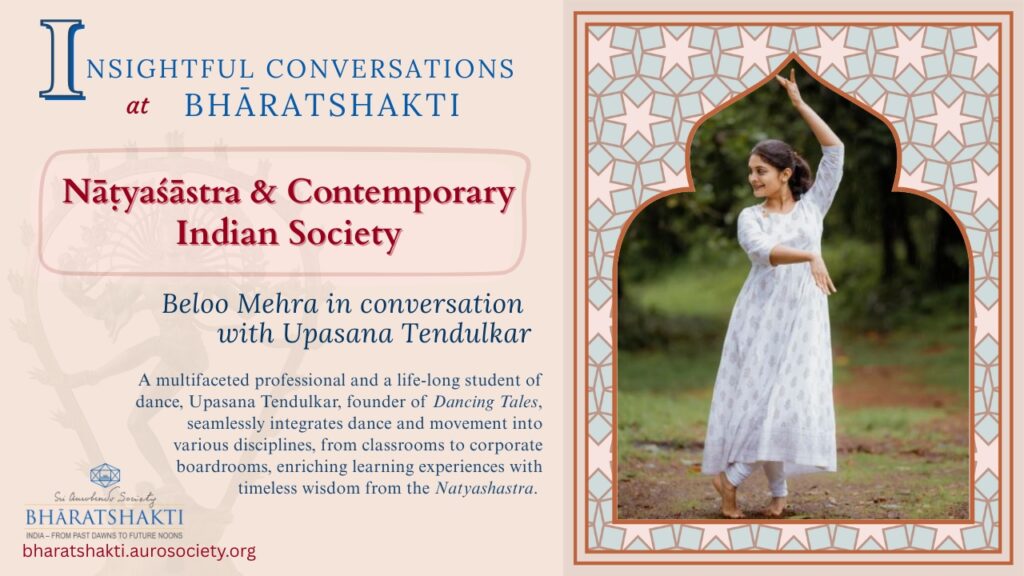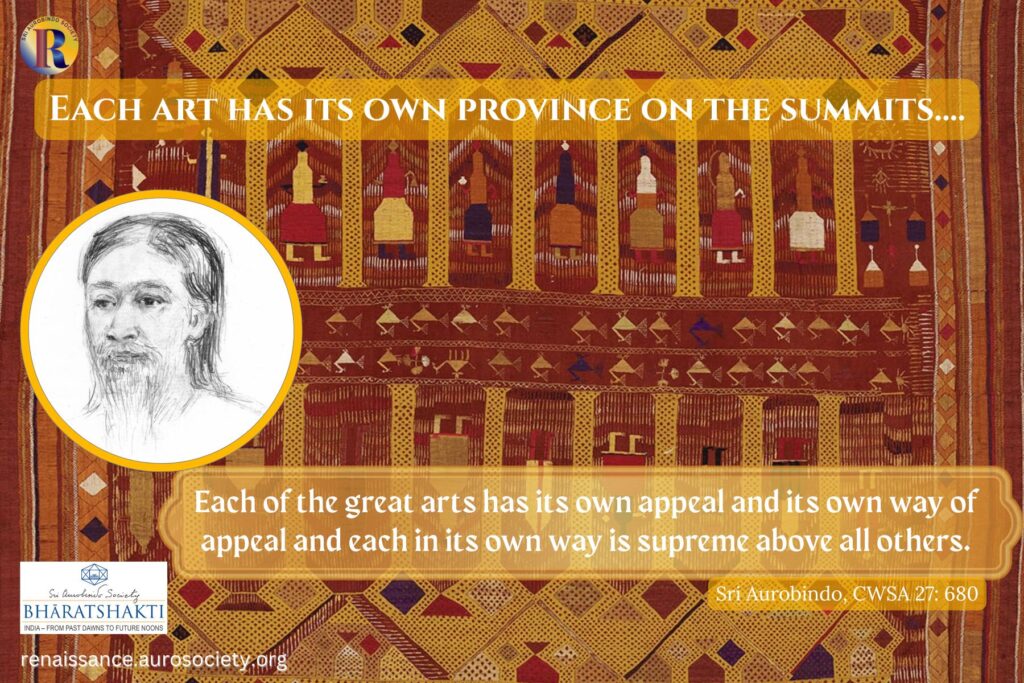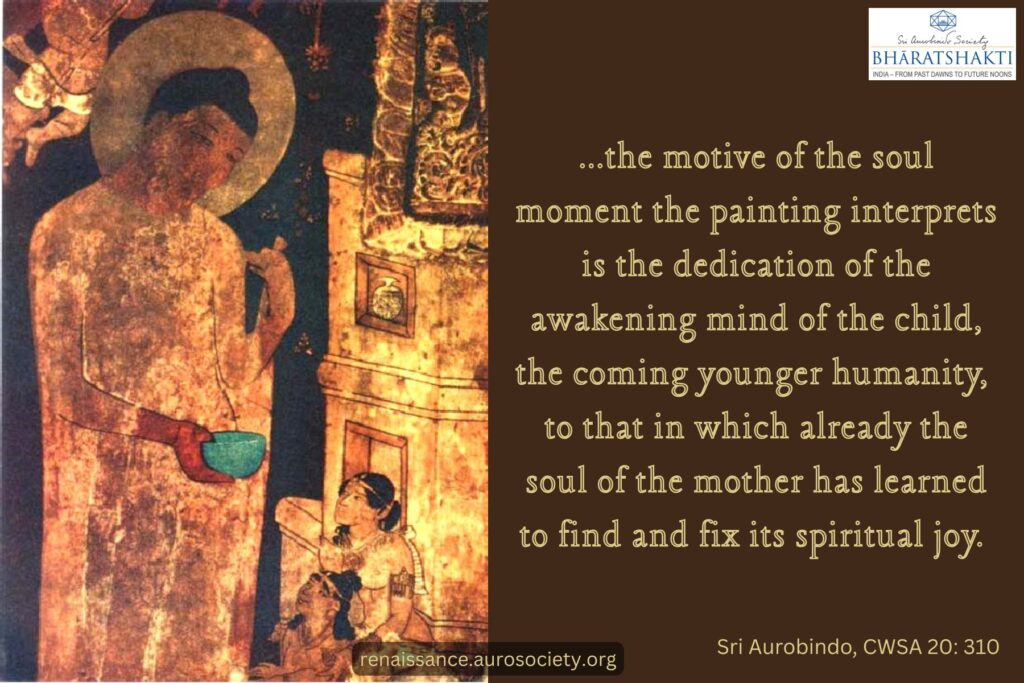Volume V, Issue 9
Author: Narendra Murty
Editor’s Note: If all art is an interpretation, from where does the inspiration for artistic creation come? If we agree that an artist receives suggestion from Nature and inspiration from within, is there a place for realism in art? The author explores these and a few more questions in this essay.

What is Art? Why do we create Art? Many have said that Art is a quest for Beauty. If that is so, then from where do we derive this “sense of Beauty?” An obvious answer may be: from Nature. Or from the World. Yes, Nature is supremely beautiful. Does that mean that Nature is an artist?
Many would agree to that and there hasn’t been a dearth of aesthetically sensitive artists and poets who see in Nature, the sublime Art of the Divine. To say that Nature creates Art is to say, in effect, that it is the Divine that actually creates. Because the Divine is manifested in Nature. “In the blue of the sky, in the green of the forest, whose is the hand that painted the glow?” asks Sri Aurobindo in the poem Who.
Yes, Nature (or the World) seems to be the source of all Beauty. If that is so, why create Art? Beauty already exists, so mere reproduction or photography should suffice! Why create our own version of beauty out of Beauty that is already there? Isn’t that an imitation and a pointless repetition? No. Because even the best photographer is not happy with his photograph. He edits and photoshops it and creates his ‘desired’ picture.
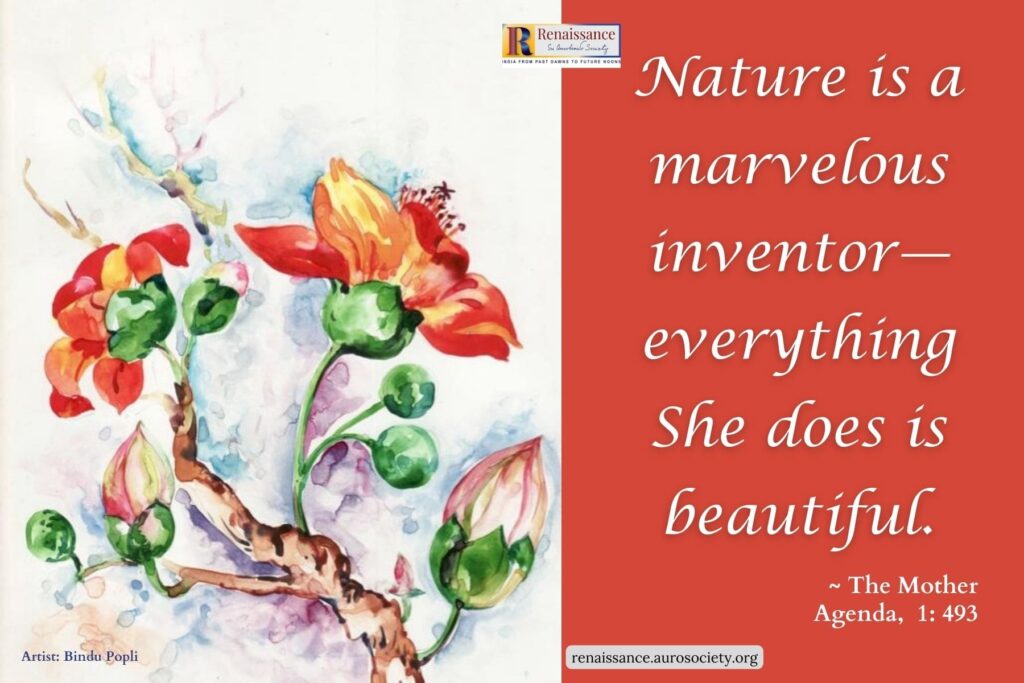
When the artist (or the photographer) takes something out of Nature and creates his own art, in response to the suggestion that Nature gives him through its myriad forms, he adds his own vision, his own interpretation, to create his art. That is why Sri Aurobindo says: “All Art is interpretation. Creation is a misnomer; nothing in this world is created, all is manifested.” (CWSA, Vol. 1, p. 538). When an artist creates art, in respect of the world, he makes the statement: This is how I see it.
When Shakespeare or Kalidasa wrote their plays, Tagore or Wordsworth their poetry, van Gogh or Michelangelo painted their pictures– they may have portrayed Nature or the play of human emotions – things that already exist, but they created them afresh in the light of their own minds. And that is Art. So fundamentally, all Art is: Nature + Mind. Or, the World + Mind = Art. So Art is the value that the artist adds to the beauty that is already there in the World. Hence Art is an expression, or an interpretation, as Sri Aurobindo puts it.
So Art can also be seen as a kind of image forming or the power of image forming. To the images of Nature, the artist adds his own vision. And this image forming activity of the mind comes even before the logical, concept-forming activity. Because such image forming is a product of his imagination, not of his rational faculty. Man is an artist first, a thinker later. That is why we find in the pre-historic cave paintings, the oldest expression of Art known to man. In the cave paintings of Altamira (Spain) and Bhimbetka (India), we see the handiwork of the oldest artists of planet earth – eons before the rational or the literary man was anywhere in the scene.
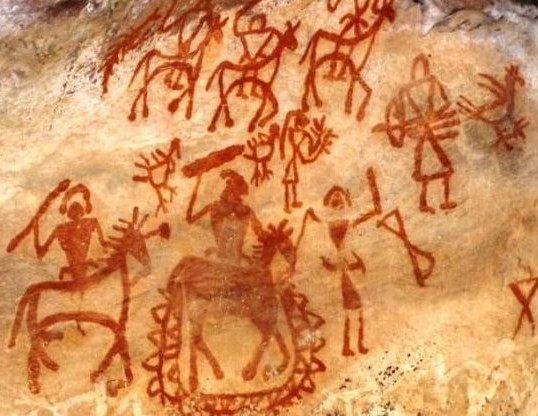
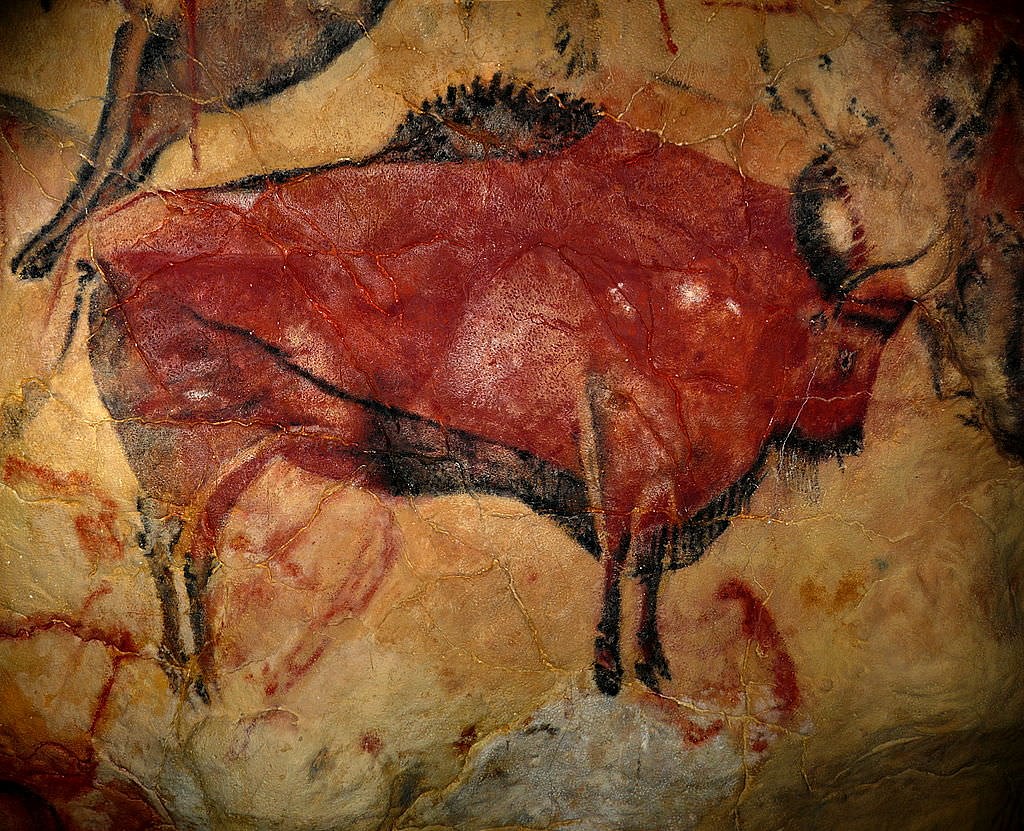
The paintings are estimated to be anywhere between 15000 to 30000 years before our present day. The cave men who painted those vivid pictures probably in the light of some flickering lamp – depicted the animals and their hunting the way they saw it. Suggestion from Nature and Inspiration from within. Hence, Sri Aurobindo says, “The essence of the inspiration always comes from within but the forms of expression are based on Nature though developed and modified by the selective or interpretative sight of the artist.” (CWSA, Vol. 27, p. 685).
This image forming ability in the later stages of human evolution developed into the concept forming ability as a result of the invention of the languages. And that gave rise to the world’s literature and poetry. The basic principle remains the same irrespective of the expression.
If we have accepted that Art is nothing but an artist’s interpretation and expression of what he sees in Nature (or in Life), is it right to assume that it would express only beauty? If Art is a reflection of what is there in the artist’s mind, then wouldn’t it be utopian to expect that it would and should express only beauty?
And that is exactly what we find in the history of Art – especially in the last 100 years or so. Prior to that, Art was always associated with Beauty. An “artistic work” whether a painting or a poem, was always assumed to be beautiful. Not anymore. Slowly in Art, crept in the ugly and the grotesque; the sordid and the vulgar. In the name of Realism, artists of all shades and hues – even the reputed ones, began to express and give shape to the dark and ugly side of the human mind.
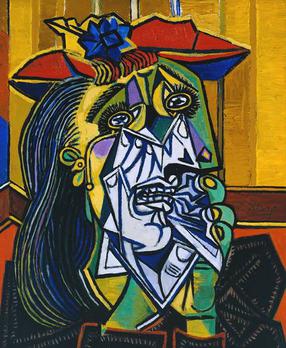
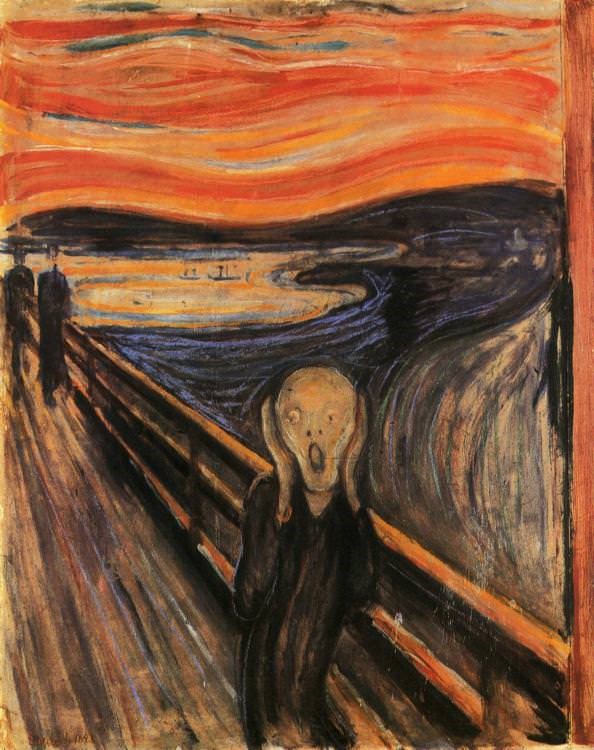
I want the readers to reflect deeply on these pictures and see how their minds are reacting to these images and whether according to them this kind of Art aligns with their aesthetic sensibilities and what they understand by Beauty. Though purely from an academic standpoint one could argue that this kind of Realism reflects life and hence a legitimate form of Art. I personally find these pictures very disturbing and unsettling. These pictures are only indicative in nature and we can find same kind of expressions amply in literature and poetry.
Also read:
The Obscene and the Ugly – Form and Essence
If Realism, being true to what life is, becomes the base for artistic creation, then one can pose the question as to why should we not consider a newspaper editorial as a work of Art? Or a weather report? They too are real and reflect a true picture of life! I don’t think there’s any argument against this if we are playing the game of rhetoric. But probably we do not consider them to be artistic creations because they merely touch the surface of things and are fleetingly evanescent. A newspaper editorial, no matter how well written, becomes trash in a couple of days in the maelstrom of events. And a weather report becomes obsolete the next day.
So it seems that Art, in some way, is inextricably linked with durability. The newspaper editorial and the weather report though they may capture our immediate attention, they are utterly impotent to have a grip over our minds. Because they are about the surface of things and there’s nothing enduring about them.
Sri Aurobindo makes this point in The Future Poetry when he says:
The surface mind is powerfully attracted by the stir of the outward passion and excitement, the stress of immediate thought, life and action, hastens to embody it in speech or in deed and has no leisure to transmute life into those greater abiding values of which the soul in its depths is alone capable.
But the higher faculties are given us as keys to a deeper experience; the seer, the poet, the artist, the children of the spirit’s light and intuition are only true to themselves when they live in the depths of the soul, refuse to be hurried away by the surface call of mind and life and wait rather for their own greater voices.
~ CWSA, Vol. 26, pp. 260-261
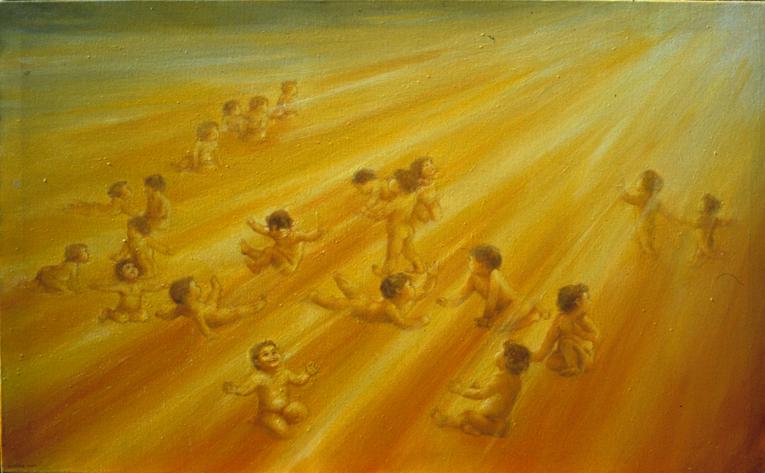
This is the reason why even sensational, bestselling novels fade into oblivion a few years down the line. Because the hunger for sensation and titillation demands ever new avenues and merchandise for its satisfaction. Whereas the great literary classics endure for centuries. Even today reading Socrates’s defence in the Athenian trial court in Plato’s Apology, or the plays of Shakespeare stirs us to our depths. Because such works of art touch the depths of our being and hence they endure and survive all the ravages of time.
Shakespeare himself made a prophecy of sorts about his writing when he said:
Not marble nor the gilded monuments
~ Sonnet 55
Of princes shall outlive this powerful rhyme.
So this durability gives us a clue as to what true Art is. And the question for us is whether we are going to live in the surface mind of immediate sensations and vital ripples or in the enduring depths of our soul – the real abode of all great and true Art.
About Beauty and Art, Sri Aurobindo says: “Beauty is the special divine Manifestation in the physical as Truth is in the mind, Love in the heart, Power in the vital.” And again, “Beauty is the way in which the physical expresses the Divine – but the principle and law of Beauty is something inward and spiritual which expresses itself through form.” (CWSA, Vol. 27, p. 699). Here of course, form refers to all the expressions of art – whether in images, words or sounds.
READ:
Beauty and Harmony in the Warp and Woof of Nature

For Sri Aurobindo, Beauty is a manifestation of the Divine. In Savitri, he puts it in this manner:
Beauty is his footprint showing us where he has passed,
Savitri, Book II, Canto 2, p. 112
Love is his heart-beats’ rhythm in mortal breasts,
Happiness the smile on his adorable face.
Hence, Beauty is god’s footprint. And Love is what humans feel when God beats in the heart, and the happiness that man experiences is actually God smiling through him.
And on how the sublime and enduring works of Art come about, Sri Aurobindo says:
A ripple of light and glory wraps the brain,
Savitri, Book II, Canto 2, p. 110
And travelling down the moment’s vanishing route
The figures of eternity arrive.
As the mind’s visitors or the heart’s guests
They espouse our mortal brevity awhile,
Or seldom in some rare delivering glimpse
Are caught by our delicate surmise.
Shelly had written in Adonais that Heaven’s light forever shines; Earth’s shadows fly… But Sri Aurobindo tells us what happens when Heaven’s light descends and dispels the shadows of the Earth; when it comes as the mind’s visitor or the heart’s guest – in the writer’s and poet’s inspiration, in the painter’s and sculptor’s vision. In such rare moments, the artist is granted glimpses of those heavenly visions and figures. And he captures them in his literature and poetry, in his sculptures and paintings – and becomes a co-creator with the Divine. We call that, great Art – when we experience the Divine as Sundaram.
~ Design: Beloo Mehra

